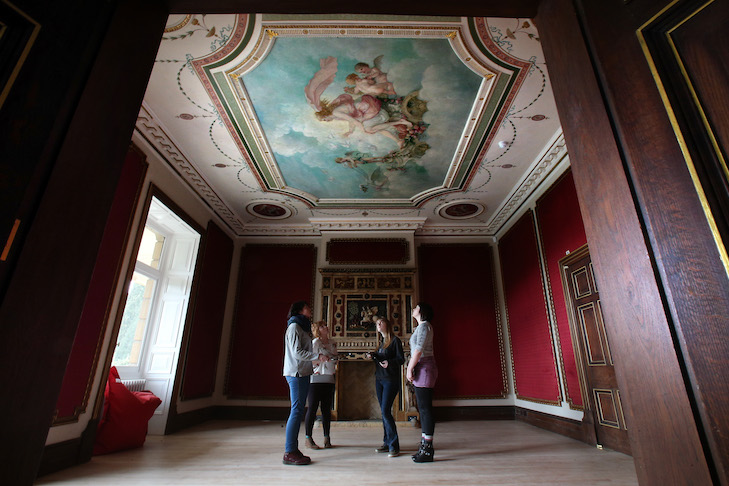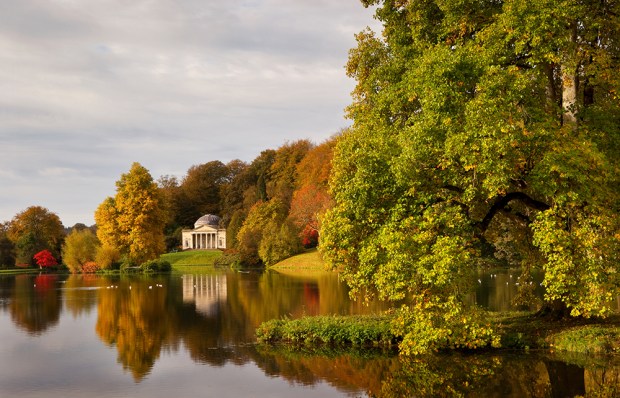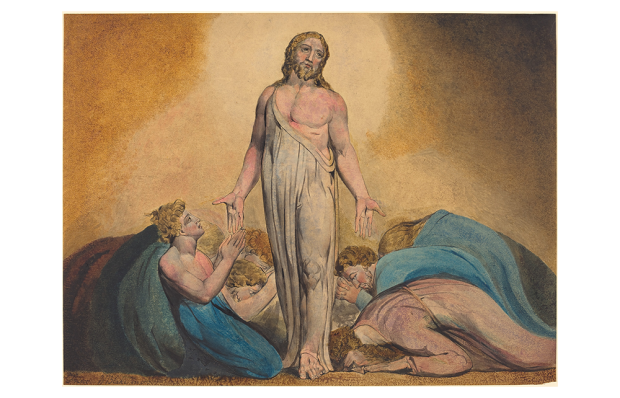Hilary McGrady, the new director-general of the National Trust, sent me (and no doubt other journalists) a nice email hoping we can meet. I wish her well, and whenever I find myself criticising the Trust, I am conscious of the fact that, compared with its equivalents abroad, it is a miracle. But I was a bit irritated by her first interview, with the BBC: ‘I want to reach out to more people… The days of walking into one of our beautiful houses and saying a family lived here, that’s not going to do it.’ Obviously, any organisation offering public benefit wishes it to reach as many people as is sensibly possible, but there is something about her framing of the point that is wrong. It implies that the thing for which the Trust is best known is its problem. It is a modern institutional disease. The people who run great organisations get scared by them. The Women’s Institute runs away from jam and ‘Jerusalem’. The Guides get embarrassed about teaching girls to tie reef knots and boast of their explicit talks about contraception. Great universities are silent about their academic prowess and point up their diverse intake. Great public schools are shy about the rounded education they give their pupils and emphasise how they share their sports facilities with locals. The Globe theatre director thinks it’s about gender, when most people would want it to be about Shakespeare. The army mutters that it might stop ranks calling officers ‘sir’. Yes, all such bodies need renewal, but they must not betray the fundamental reasons why they are loved, and why, indeed, they exist.
Last Sunday was Good Shepherd Sunday. This is traditionally an occasion for considering vocations for the priesthood. As is well known, there are, in Britain, very few. In the Catholic church, this shortage leads to calls for a married priesthood, though the experience of the Church of England does not suggest this solves the problem. I find it psychologically improbable that it is the depth of the commitment required which puts people off: for many, serious commitment is an incentive. It is much more likely because those in charge no longer show about why the commitment might be worth making. Given modern conditions, more thought could be given to allowing people to become priests for a fixed term, learning the nature of the commitment by living it. The aim would be permanence, but it could end after, say, five years, with no hard feelings. Like Teach First, Preach First.
People are expressing bemusement that Presidents Trump and Macron should get on well, since they seem such different people. Surely a clue lies in their shared title. They are the only important executive presidents in the western world, so they have that particular combination of real power and ceremonial pomp which is rightly denied to prime ministers. They love it. Besides, they are not so different, though M. Macron is Gallicly suave and Mr Trump is Yankee brash, and the former is small and thin,the latter neither. Both seem to be egomaniacs who believe in and embody führerprinzip (though luckily neither leads a country which gives it anything like full rein). They recognise it in one another. They can pump it up further by mutual admiration. ‘And the flags. And the trumpets. And so many eagles,’ as Eliot puts it in ‘Coriolan’. America first! Europe first!
In January, the Church of England announced a new child abuse accusation against the late Bishop George Bell. They handed it to the police. This weekend, the police said that the case is now closed. Their spokesman added, ‘Of course further police investigation or action is not possible as Bishop Bell died 60 years ago.’ Indeed so. The date of his death was known to the police when they received the information. Why did they not at once tell the church authorities to go away, on the grounds that it is not their job to investigate crimes allegedly committed by people who, being dead, cannot be tried? Three months have been wasted. The police involvement allowed the church to refuse to say anything further. Now that this cloak has fallen away, we may find out if anything lies beneath. We do not yet know what the accusation is, nor what process is being used to establish its truth. Lord Carlile’s report about the first accusation revealed that the process was utterly inadequate. The church says it has learnt its lesson, though the logical conclusion is that it must exonerate Bell. If this second process is to be credible, it must not be conducted by any bishop or official who was involved in the first. Yet the authorities still will not say what is happening. Justice for Bell is delayed and denied.
An English Heritage report says that warm areas of southern England are more at risk from common clothes moths than the rest of the country. This information is very much in ‘Pope is a Catholic’ territory. In our own little warm area of southern England last year, we lost a Konya rug, two overcoats, a hunting coat, a pair of jodhpurs, a suit, any number of jerseys and the baize of a billiard table to moth. Nevertheless, we are concerned lest such atrocities give rise to lepidopterophobia. To blame all moths for the actions of a few is like blaming all Muslims for Isis. There are roughly 2,400 species of moth in this country, and my wife, who is an acknowledged expert, has identified 808 of them in our garden. Almost all of them are innocent, peaceful and well-integrated, including the recent immigrants blown in across the English Channel. Their diversity should be celebrated. The only moths who regularly eat the garments and soft furnishings of hardworking British families are the common clothes moth, the large pale clothes moth and the case-bearing clothes moth. There is also a more handsome thing called the tapestry moth, which eats what you might guess from its name, but the field guide says that it has barely been seen in 50 years.
Got something to add? Join the discussion and comment below.
Get 10 issues for just $10
Subscribe to The Spectator Australia today for the next 10 magazine issues, plus full online access, for just $10.
You might disagree with half of it, but you’ll enjoy reading all of it. Try your first month for free, then just $2 a week for the remainder of your first year.















Comments
Don't miss out
Join the conversation with other Spectator Australia readers. Subscribe to leave a comment.
SUBSCRIBEAlready a subscriber? Log in